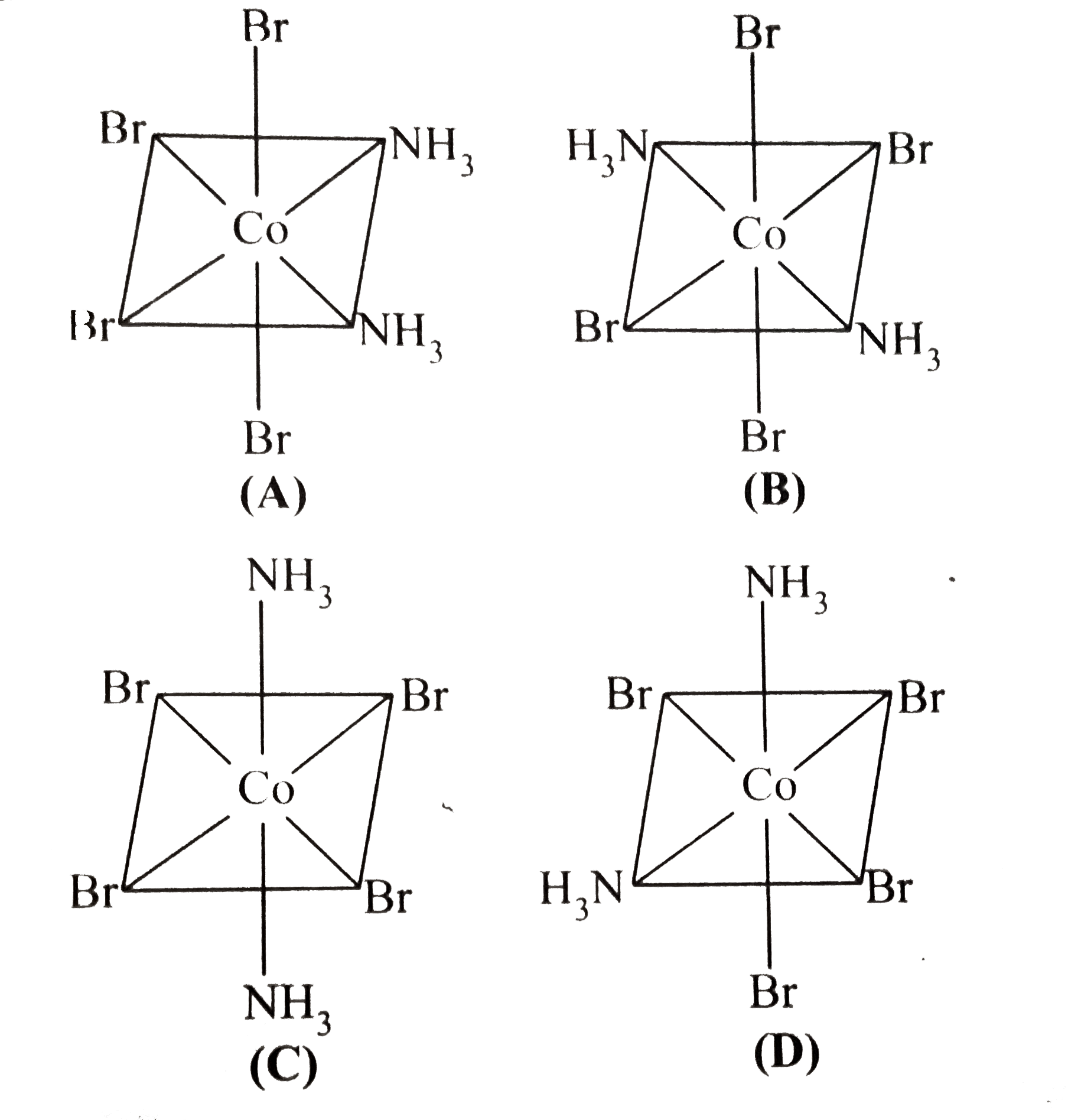A
B
C
D
Text Solution
Verified by Experts
The correct Answer is:
|
Topper's Solved these Questions
COORDINATION COMPOUNDS
CENGAGE CHEMISTRY|Exercise Exercises Multiple Correct(Naming And Terminology)|9 VideosView PlaylistCOORDINATION COMPOUNDS
CENGAGE CHEMISTRY|Exercise Exercises Multiple Correct(Isomerism )|10 VideosView PlaylistCOORDINATION COMPOUNDS
CENGAGE CHEMISTRY|Exercise Ex 7.2 Objective|8 VideosView PlaylistCHEMICAL KINETICS
CENGAGE CHEMISTRY|Exercise Archives Subjective|23 VideosView PlaylistD AND F BLOCK ELEMENTS
CENGAGE CHEMISTRY|Exercise Archives Subjective|29 VideosView Playlist
Similar Questions
Explore conceptually related problems
Knowledge Check
Similar Questions
Explore conceptually related problems
CENGAGE CHEMISTRY-COORDINATION COMPOUNDS-Exercises Linked Comprehension
- Consider to following isomers of [Co(NH(3))(2)Br(4)]^(Θ) and answer th...
02:56
|
Playing Now - Consider to following isomers of [Co(NH(3))(2)Br(4)]^(Θ) and answer th...
02:56
|
Play - Consider to following isomers of [Co(NH(3))(2)Br(4)]^(Θ) and answer th...
02:56
|
Play - Consider to following isomers of [Co(NH(3))(2)Br(4)]^(Θ) and answer th...
01:56
|
Play - Consider the following experiments and answer the questions at the end...
02:25
|
Play - Consider the following experiments and answer the questions at the end...
01:55
|
Play - Consider the following experiments and answer the questions at the end...
01:44
|
Play - Consider the following experiments and answer the questions at the end...
02:23
|
Play - Two research students were instruced intructed to synthesise the compl...
03:05
|
Play - Two research students were instruced intructed to synthesise the compl...
02:48
|
Play - Two research students were instruced intructed to synthesise the compl...
03:03
|
Play - One cationic complex has to isomers A and B Each has one Co^(3+) five ...
02:23
|
Play - One cationic complex has to isomers A and B Each has one Co^(3+) five ...
02:16
|
Play - Complexes A and B have similarity in the following but not in .
03:34
|
Play - Velence bond theroy describes the bonding in complexs in terms of coor...
03:42
|
Play - Velence bond theroy describes the bonding in complexs in terms of coor...
01:55
|
Play - Square planar complexes are formed by d^(8) ions with strong field lig...
03:01
|
Play - Square planar complexes are formed by d^(8) ions with strong field lig...
05:14
|
Play - Square planar complexes are formed by d^(8) ions with strong field lig...
04:40
|
Play - If in the mixed carbonyl the other ligand is also pi acceptor it would...
02:03
|
Play
